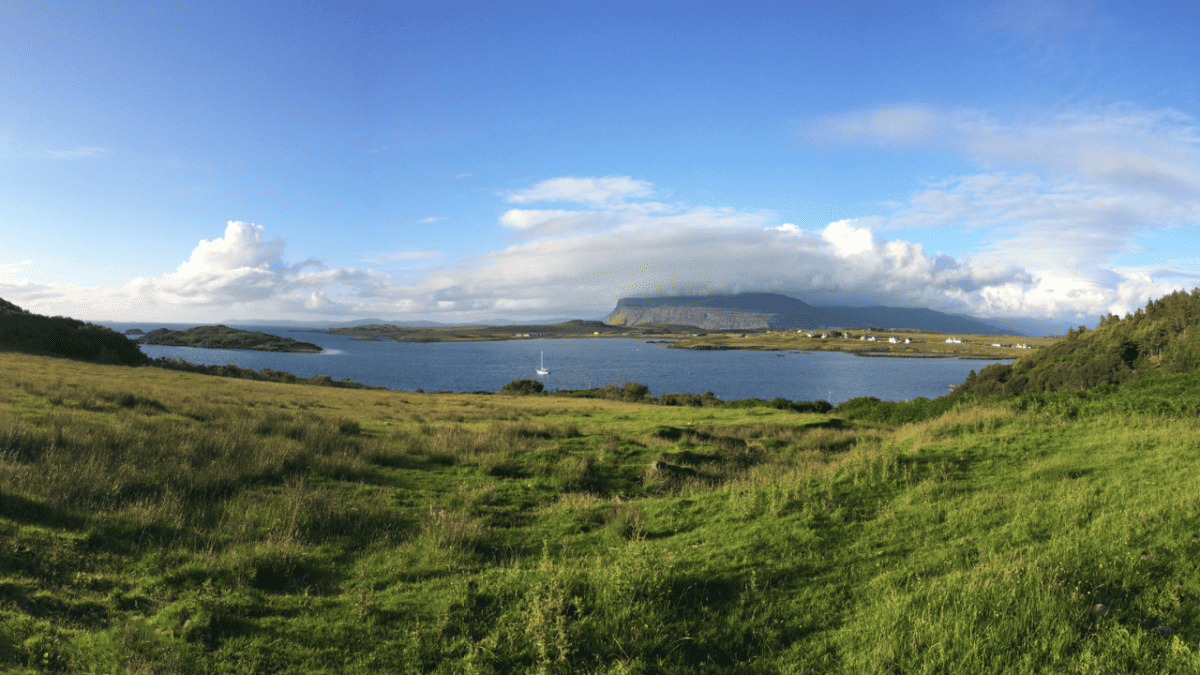A picturesque camping destination on Scotland’s coast, the Isle of Mull is bursting with rich wildlife, gorgeous beaches, quaint harbours, fascinating history and art – and, of course, a wealth of spectacular landscapes.
Travel by ferry from the mainland and immerse yourself in the island’s breathtaking scenery by staying at one of its many campsites or by wild camping. Here’s everything you need to know about Isle of Mull camping and the best places campsites:
The Best Campsites on the Isle of Mull
Shieling Holidays
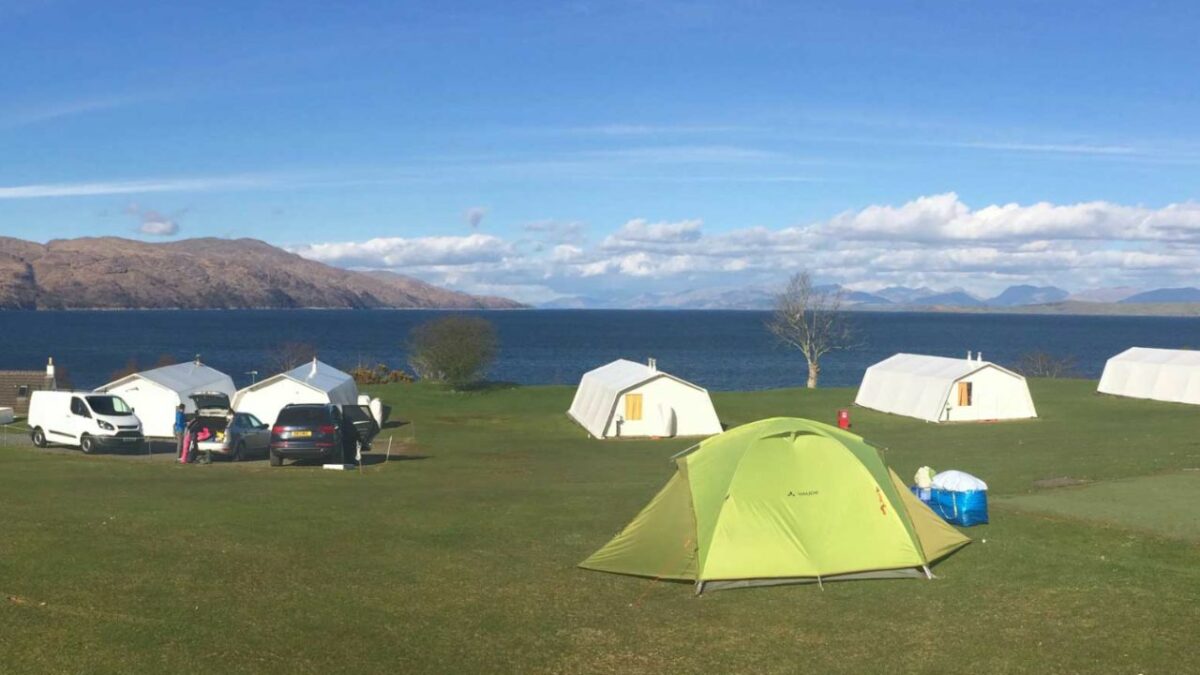
Located on the southwestern coast of the Isle of Mull, Shieling Holidays is close to most of the island’s attractions and offers an ideal family-friendly break. The campfires are welcome, and the camping spots are close to the coast. In other words, those staying here can enjoy spectacular views over the bay while preparing their favourite meals.
The easiest way to reach this campground from the Scottish mainland is by ferry from Oban. You’ll need to take the Oban – Craignure line, and upon exiting the ferry on Mull, you’ll be only a few minutes of walking away from the campsite.
At Shieling Holidays, motorhome campers can expect plenty of hardstanding pitches with optional electrical hookups. However, the highlight of this well-located campground is undoubtedly its array of ready-made tents. These are equipped with beds and all the basic facilities.
Regarding shared facilities, Shieling Holidays features a dishwashing area, clean toilets, and on-site hot showers. There is also a common room with appliances such as kettles, microwaves, and hotplates. I should also mention the games room (expect large pool and ping-pong tables), free Wi-Fi available throughout the campsite, and the token-operated laundry service.
However, these facilities are just one thing that makes Shieling Holidays a phenomenal option for anyone wishing to spend a few days on Mull. The other is the campsite’s location: it is situated conveniently close to the ferry terminal and the bus station, as well as to local cafes, restaurants, and pubs. It’s an ideal place to stay on the island for a holiday.
Pennygown Holiday Park
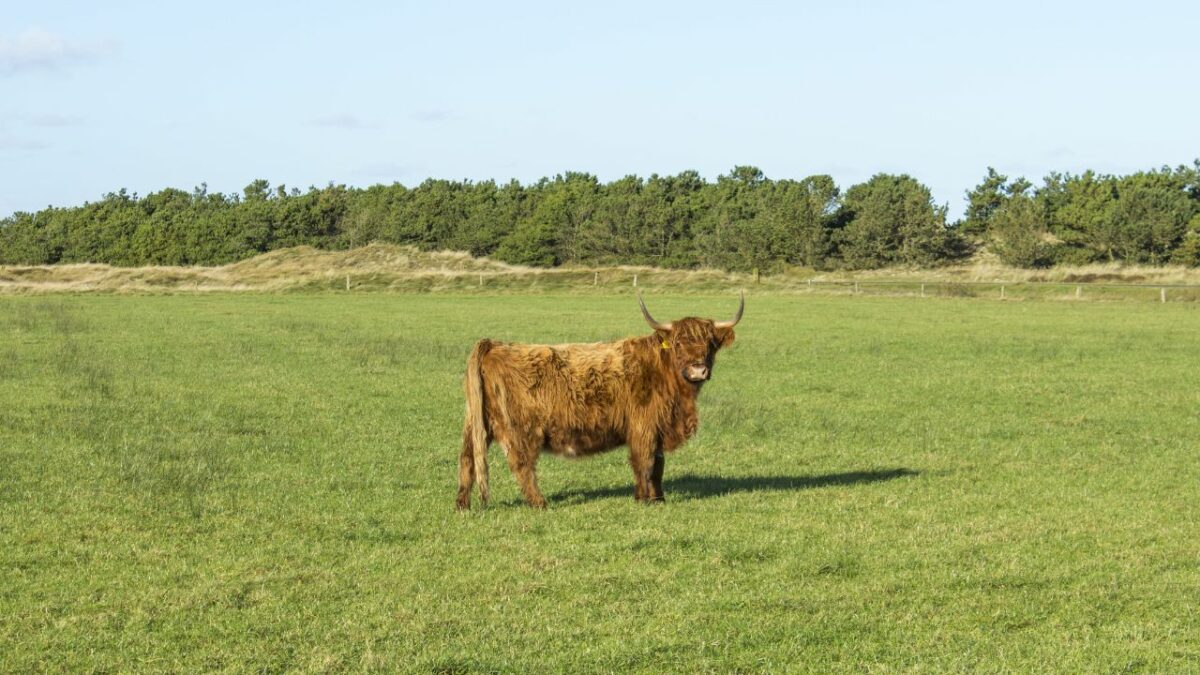
Located about nine miles north of Shieling Holidays is the Pennygown Holiday Park. This particular campground also overlooks the Sound of Mull – which separates the island from the mainland – and is easy to reach by Oban – Craignure and Lochaline – Fishnish ferries.
One of the best things about the campsite is that it’s pet-friendly. It’s an ideal option for outdoor enthusiasts who want to bring their furry companions to the Isle of Mull.
Those planning to stay at Pennygown Holiday Park should remember to pack some sausages for the BBQ – this is one of those places where you’ll want to have a barbecue. It’s a family-run campsite with an impeccable Scottish atmosphere and magnificent views of the Sound and the surrounding islands.
The closest place to stock up on supplies is the village of Salen, which is less than two miles to the west. I should also point out that Pennygown Holiday Park belongs to a large farm that’s home to a herd of Highland cows. But despite the cattle, the campsite offers many grass pitches with electrical hookups.
The park’s excellent amenities include free Wi-Fi, toilets, showers, and a laundrette. There are also several on-site campground wardens whose job is to ensure all is well with the visitors and their needs.
Salen Bay Campsite
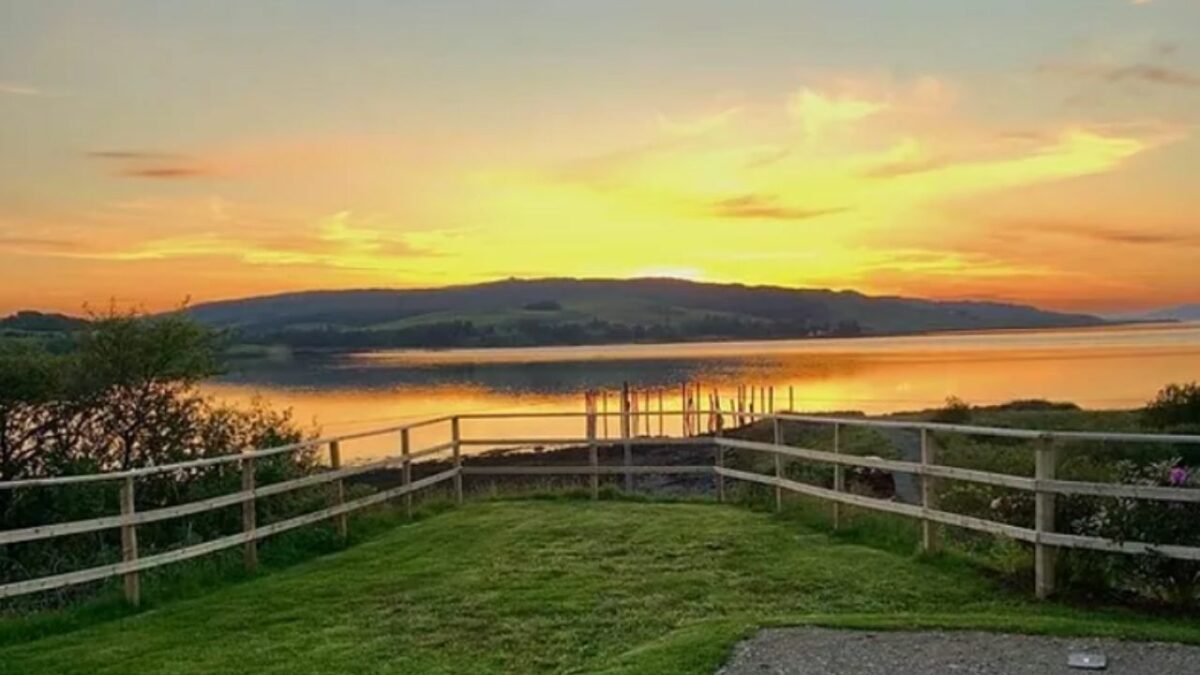
As its name suggests, the next campground on the list is located in the bay of the village of Salen, a few minutes down the road from Pennygown Holiday Park. It provides some of the best views of all campsites on the Isle of Mull.
Salen Bay Campsite is elevated and offers 360-degree panoramic views of the island, the mainland, and the Sound that separates them. Despite this, it is rarely overcrowded: many consider it one of the island’s hidden gems.
While staying here, you’ll always be close to Salen’s shops and bakeries. In addition, the campground provides easy access to the shore: you can go on a beachside walk whenever you want. Simply put, it’s a well-positioned campground and a perfect base for campers looking to experience the island’s natural beauty.
It’s also worth pointing out that the Salen Bay Campsite is only a short drive from Fionnphort, Tobermory, Craignure, and Fishnish ferry terminals. So, it’s not only a great place to stay while exploring the island but also an excellent hub for folks wishing to experience this region of Scotland in its entirety.
Besides serviced (electricity and water) hard-standing pitches, Salen Bay Campsite also features a number of standard tent pitches and tent pitches with electric hookups. There is also a shower block with hot, powerful showers.
Tobermory Campsite
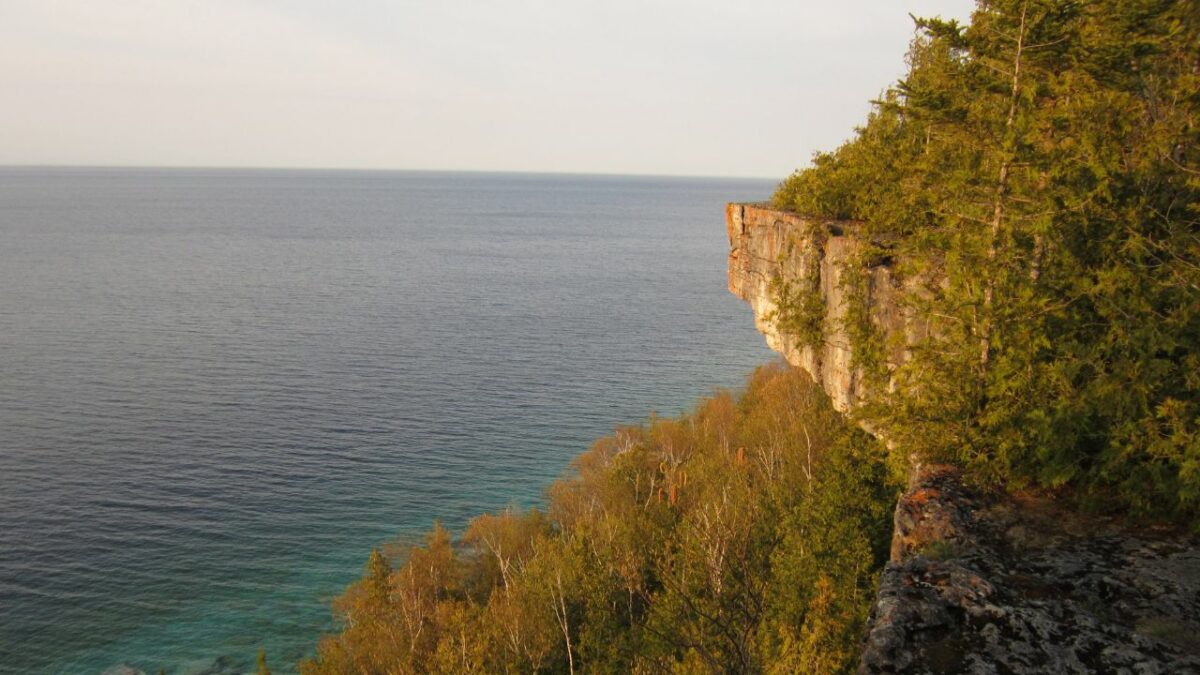
Even further north is Tobermory Campsite, situated in the town of the same name. Tobermory is the island’s largest settlement and capital: staying at this campsite means being close to various shops, restaurants, and pubs.
The campground is only a 20-minute walk from the town’s centre and features several different accommodation options, ranging from luxury holiday caravans to standard tent pitches. Most of these operate on a first-come, first-served basis, although booking a limited number of tent pitches in advance is possible.
Another remarkable aspect of this place is its riverside location and the fact that there are some excellent walks nearby. Regarding food, one of the closest restaurants is Hebridean Lodge: it’s only a short walk from the campground and serves terrific dishes.
However, the most unique thing about Tobermory Campsite is that it features a private spring, which is UV-treated and filtered. This means that each of this place’s pitches has a tap with drinkable water. Moreover, visitors can access a self-service laundrette at the campground’s brand-new Harbour Association building.
Other facilities at Tobermory Campsite include an information point, a shared shelter with a table and seating, and utilities such as electric sockets and kettles. All of these amenities are available to both motorhome and tent campers.
Crannich Holiday Caravans & Campsite
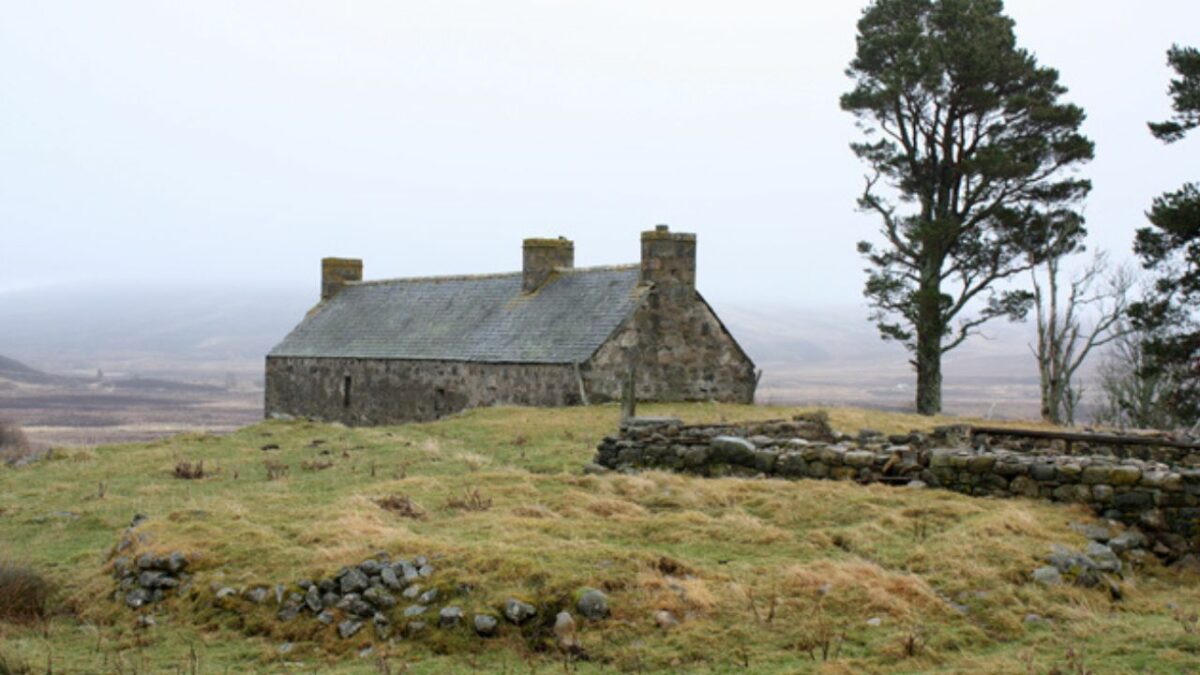
Unlike the coastal campsites described above, this one is situated in the island’s interior, less than a mile south of Loch Frisa. It’s an excellent base for exploring Mull due to its central location on the island.
One of the best things about the Crannich Holiday Caravans & Campsite is that this is actually a small working farm with Highland horses, sheep, and cows. Speaking of animals, those who stay here can also expect to see various birds from the campsite, including hen harriers, white-tailed eagles, golden eagles, and buzzards.
Although located away from the main road, the campground is easy to access thanks to the track that leads straight to it. Just take the first left after passing Heather Lodge when going east to west along A848.
Besides Salen (a 10-minute drive) and Tobermory (a 20-minute drive), places worth visiting while staying at Crannich include Calgary Bay and Dervaig. Calgary Bay features one of Scotland’s most beautiful beaches (more on this later), while Dervaig is home to the island’s oldest pub – Bellachroy.
Amenities are plentiful at Crannich. Expect hard-standing pitches equipped with electric hookups, showers with heated towel rails, clean toilets, free Wi-Fi and satellite TV, and drinking water. The pets are allowed by prior arrangement.
Killiechronan Campsite

If you’re looking for a more “back to basics” Mull campsite, the one at Killiechronan will be right up your alley. This is one of the island’s more basic campgrounds – expect no frills or home comforts here.
Killiechronan Campsite is located at the very end of Loch Na Keal, on Mull’s western coast. Getting here is straightforward, regardless of your starting point. To reach the campground from Mull’s capital – Tobermory – drive south along A848 and switch to B8035 at Salen. Finally, change to B8073 by taking a right just before St Columba’s Scottish Episcopal Church, and you’ll be there in no time.
While it features no electric hookups, the campsite welcomes motorhomes, caravans, small campervans, and tents. Killiechronan is also dog-friendly, open year-round, and offers spectacular views over Loch Na Keal and the surrounding hills and mountains.
Regarding facilities, expect only drinking water and toilets (a bit of walking is required to reach them). If you’re planning to stay at Killiechronan, bringing everything you’ll need is highly recommended. This place also provides terrific wildlife-spotting opportunities – eagles nest on the surrounding hills.
This campsite can serve as a good base for folks planning to explore Mull’s western coast. From here, one can easily reach Loch Frisa, Ulva, Loch Ba, Ben More, and other points of interest on the island. And while there are always people at Killiechronan, the place feels more like your own private camping spot – sounds pretty good, doesn’t it?
Fidden Farm Campsite
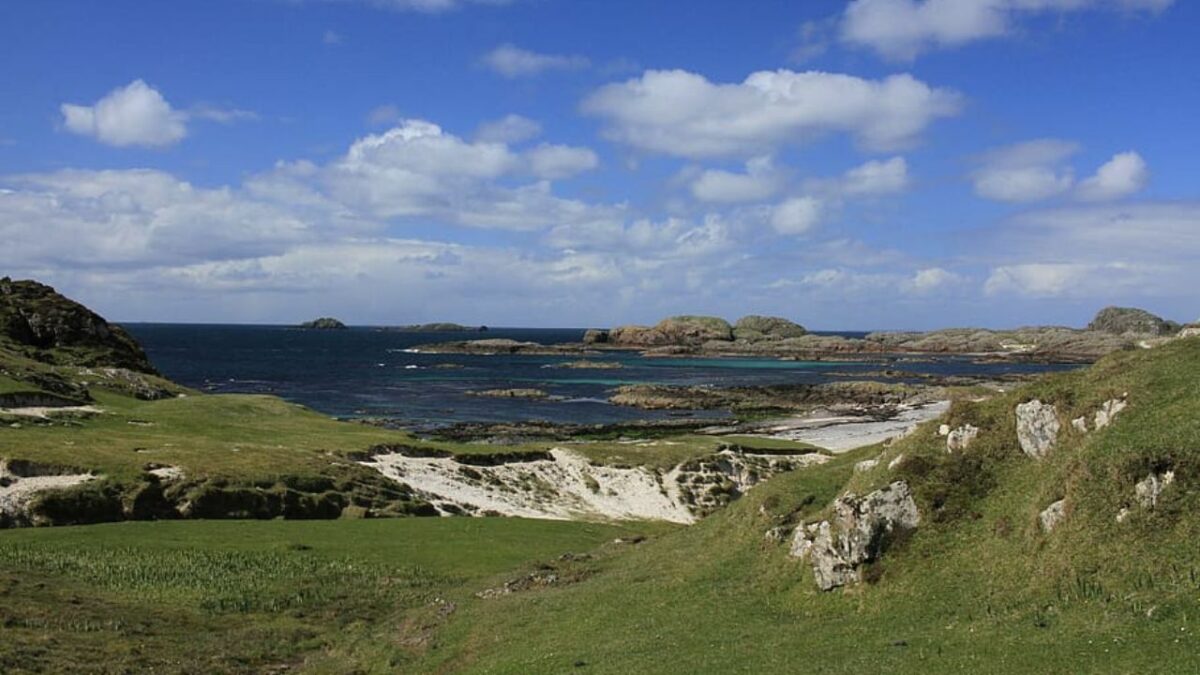
At first glance, this campsite looks like just piles of rocks and blocks of turf. But these are piles of stones and blocks of turf that curve around beautiful bays on the island’s finest stretch of coastline. Simply put, Fidden Farm Campsite is one of the finest camping locations in Scotland.
The campground is situated in the far southwest of the island, at the end of a peninsula called Ross of Mull. There, a bit over a mile south of Fionnphort, the campground overlooks the beaches with lots of well-located hard grass pitches.
Here, you will find 40 touring pitches, 40 tent pitches, and 40 motorhome pitches. It’s also worth mentioning that the campsite is pet-friendly and open from mid-spring to early autumn. However, Fidden Farm is pretty basic regarding facilities – there is only a simple sanitary block with no electricity.
Still, the campground makes up for that with its phenomenal location. It’s an excellent spot for kayaking bay to bay or cycling on quiet roads. The island of Iona, known as the “cradle of Christianity”, is just a 10-minute ferry ride away. A mile down the road is the Keel Row pub, where you can enjoy simple drinks next to an open fire.
To reach this incredible campsite from Tobermory, drive south along A848, switch to B8035 at Salen and keep driving south all the way to Loch Beg Bridge. There, take a right and drive westwards along A849 for about half an hour until you get to Fionnphort Car Park, where you can leave your vehicle. From there, it takes 30 minutes to reach the campsite on foot.
Catchean Caravans
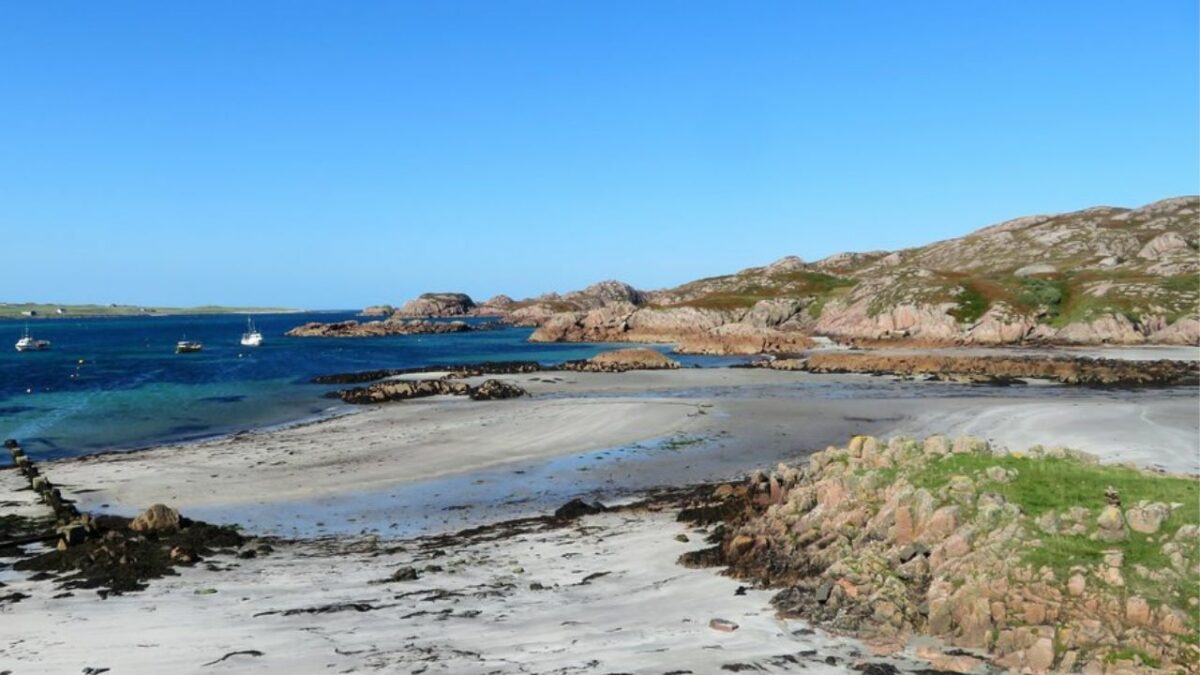
The last Mull campsite on my list is even closer to the car park mentioned above. It is located in Fionnphort, the island’s southwesternmost village and one of the most picturesque places in this part of Scotland.
The campsite is situated just outside the village and is a very peaceful and quiet place. They offer two well-equipped glamping pods, two static caravans, a shower room, and male & female toilets.
While staying here, you’ll be close to the award-winning Ninth Wave restaurant, the Keel Row pub, the village’s post office, and the local shop where you can stock up on essentials. Moreover, several walks around Fionnphort allow visitors to take in the dazzling atmosphere of the Ross of Mull.
Those feeling particularly motivated can climb Ben More, the island’s only Munro. If you’d prefer to relax, take a stroll on the white sandy beach down at Fidden or observe the local wildlife, which can be found everywhere around the village.
However, the best thing to do while staying at Catchean Caravans is to explore the nearby islands of Treshnish, Staffa, and Iona. The island of Iona is a special treat: it’s only 10 minutes away by ferry and features an abundance of wildlife, white shell-sand beaches, historical sights, and craft and art shops in its main settlement.
The Best Wild Camping Spots on the Isle of Mull
Calgary Bay

The island’s most famous wild camping destination is located in its northwestern part, half an hour’s drive from Tobermory. Calgary Bay is a gorgeous beach with fabulous scenery and plenty of cool spots to explore.
The most important thing to say about this place is that only tent camping is allowed here; campervans and motorhomes are prohibited. Moreover, campers should stay on the grass rather than pitch their tents on the beach or dunes.
That’s not a reason to worry, though. The grassland area behind the beach is massive and provides plenty of space for everyone. While staying here, you will almost certainly see canoeists and cyclists stopping by to pitch their tents and enjoy the bay’s total freedom.
The public toilets can be found on the southern side of the beach. However, there is no tap water – you can get some only from the nearby burn, which sometimes runs dry. I should also point out that the camping zone is also a grazing area, so be mindful of the sheep.
There’s a lot to explore around the bay. I recommend visiting the ruins of a small 19th-century village just up the hill from the beach. And just by the beach is one of the best places on the island to get an ice cream – Robins Boat, a boat hull flipped upside down.
Loch Frisa
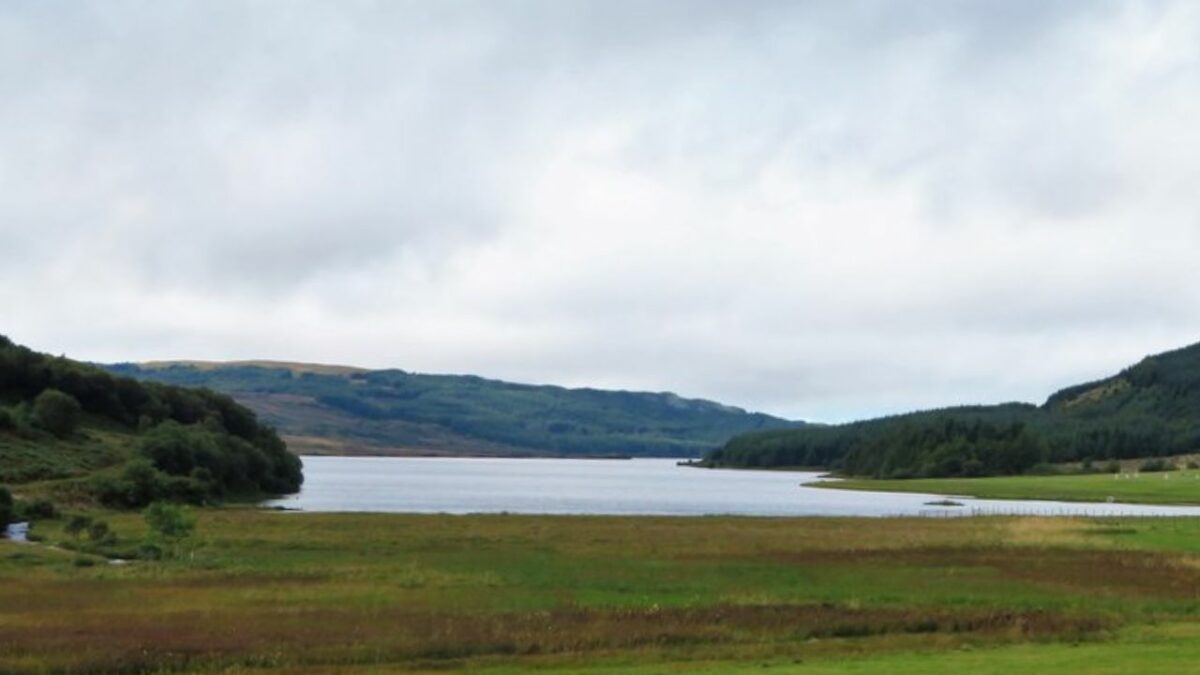
Loch Frisa is the biggest – and the most scenic – loch on the Isle of Mull. Due to its remoteness and natural beauty, it’s the best wild camping destination in the island’s interior.
Running northwest to southeast, the loch covers an area of 1,080 acres with an average depth of 76 ft. Among the islanders, it is best known for eagle-watching – it’s one of the best spots on Mull to spot golden and white-tailed eagles.
However, this is a phenomenal wild camping destination, too. You can set up camp on either the eastern (easier to access) or western (more remote) side of the lake. There are excellent tent-pitching spots on both sides of the loch.
It takes less than 15 minutes to reach Loch Frisa from downtown Tobermory by car. Head west out of the town via B8073 and keep driving until you pass Loch Carnain an Amais on your left and see the Loch Frisa Car Park on the same side. Leave your vehicle there and proceed on foot by following the gravel path south.
Once you’ve arrived at the lake’s northern tip, pick a side that looks prettier to you and find a good wild camping spot close to the shore. You’ll find no facilities of any type at the lake.
Tomsleibhe Bothy

Located at the foot of Beinn Talaidh, near the head of Glen Forsa, Tomsleibhe is the only bothy managed by the MBA (Mountain Bothies Association) on the island. This place is an excellent option for wild campers who want to avoid carrying a tent.
It can take some time to reach this bothy from Tobermory, but the journey is definitely worth it. Head south via A848 and take a right after passing Glenforsa Airfield (which will be on your left). From there, you should be able to drive all the way up to the bothy, passing Killbeg and Gaodhail on the way. However, driving so far inland is not advisable in bad weather – you’re better off on foot.
This charming stone building is a typical medium-sized MBA bothy that can house up to 10 people in its three rooms. Even though you will be sleeping inside, this is similar to wild camping since you must bring every item you need, including fuel for the fire.
Even though Tomsleibhe Bothy can be accessed year-round, those wishing to stay here during the deer-stalking season (August-February) should contact the following number – 01680 300674 – to find out more about potential restrictions.
The bothy is an excellent base for exploring Mull’s interior. However, while staying here, you’ll always be close to the coast: the Pennygown Holiday Park, described above, is only 4 miles to the northwest.
However, if you’re inclined to explore a blend of Scotland’s urban charm and its wild landscapes, consider the camping spots near Glasgow. While Tomsleibhe Bothy offers an authentic Highland refuge, the areas surrounding Glasgow serve up a delightful mix of city allure and natural serenity. It’s an enticing option for those who wish to experience the rustic charm of Mull and the vibrant energy of Scotland’s urban hubs.
North End & White Strand of the Monks Beaches
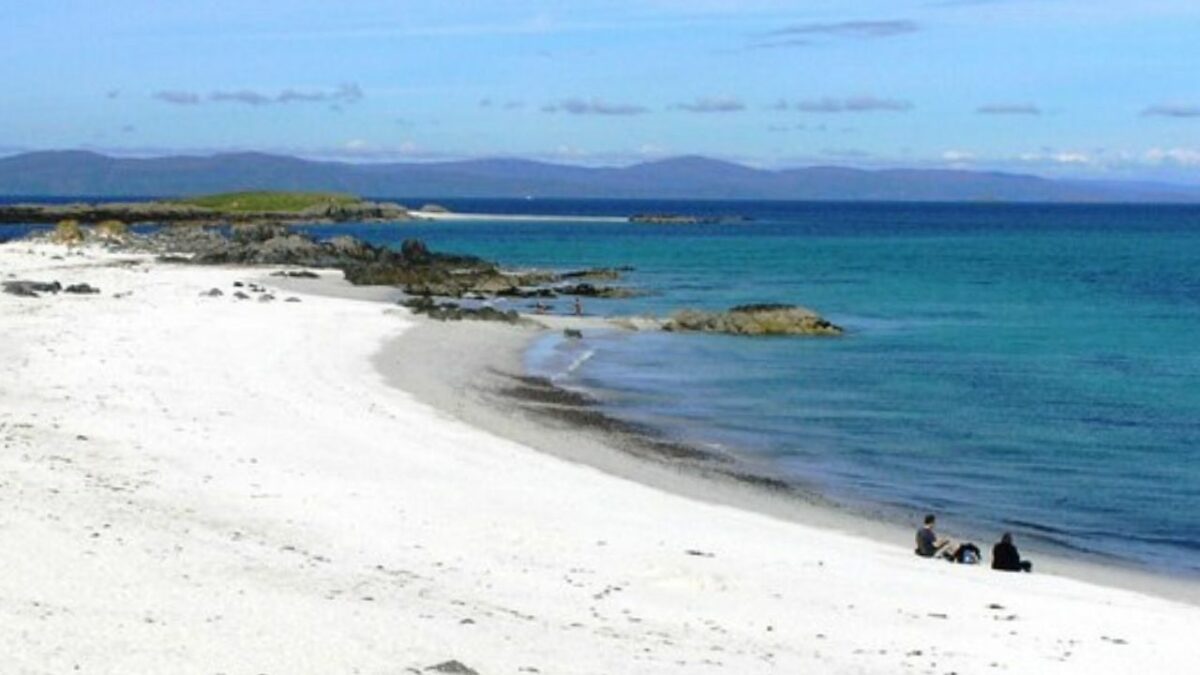
Iona’s east and northern beaches are enchanting with aquamarine water and breathtaking Ulva, Staffa, and Mull vistas, offering some of the best wild campsites in Scotland. In fact, these views inspired the “Scottish Colourists” – a group of four turn-of-the-century painters – to revive the Scottish arts scene.
Iona’s North and North East shores feature an array of dazzling beaches with hidden coves and dunes. White Strand of the Monks, also known as Traigh Bhan Nam Monach, is located on the island’s northeastern shore and has panoramic views of Ulva, Staffa, and Mull.
Swimming is not recommended due to fast tides. However, the soft white sand of these beaches turns them into phenomenal wild camping destinations. The North End Beach, also known as Traigh an t-Suidh, is remarkably serene, peaceful, and full of breathtaking views.
While at Iona, visit the island’s Abbey and other holy sites. Believe it or not, this little island is among the oldest Christian centres on the continent – it has been a sacred site for more than a millennium.
Remember that Iona’s northern beaches are just two of many amazing wild camping destinations on the island. You could embark on a multi-day camping adventure and spend some nights under the stars at the other ones, too – St. Columba’s Beach, Port Ban Beach, and Back of the Ocean Beach are just as stunning.
Ben More
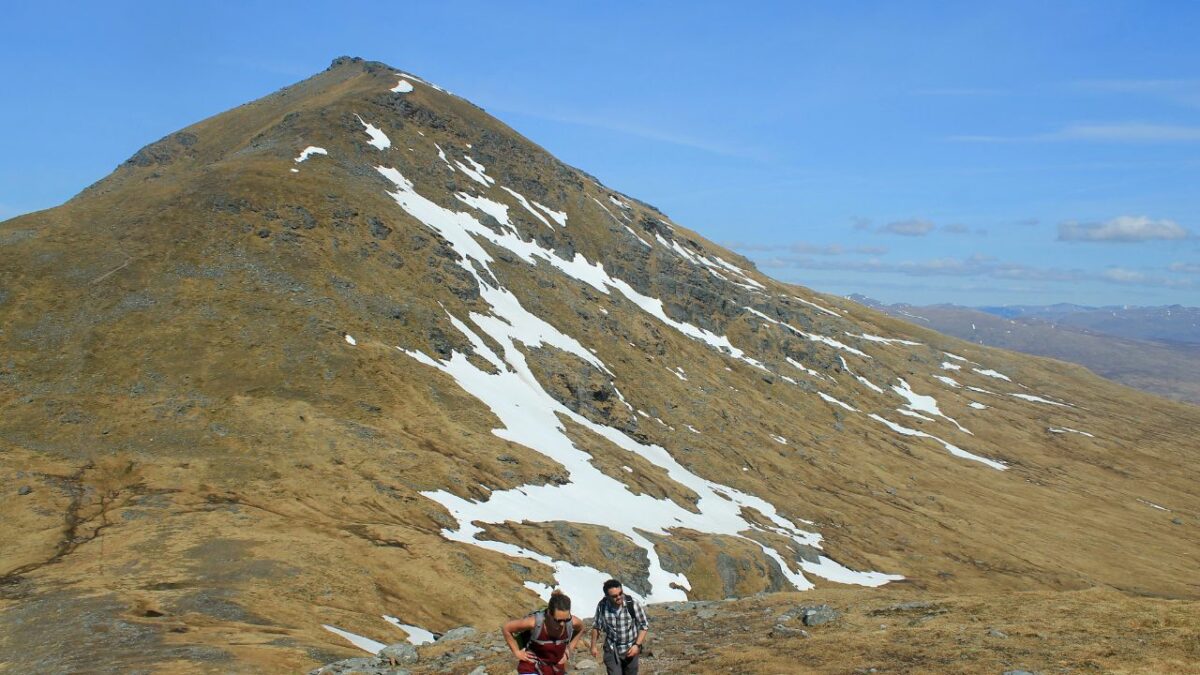
The highest mountain on the Isle of Mull, Ben More, takes three hours to climb (and three more to descend). Bagging the island’s only Munro is a serious challenge, but the views of the mainland, nearby islands, and the sea are unbeatable.
Since it’s situated in the island’s interior, Ben More can be reached from several different directions. However, the best way to approach this mountain is from Dhiseig, an estate on the southern shore of Loch Na Keal.
The process of reaching Dhiseig is almost identical to that of reaching Killiechronan Campsite, as described above. The only difference is that you must continue south-southwestwards via B8035 until you reach the estate, where you can leave your vehicle at the Ben More Car Park.
From there, walk southwards and find a nice place to set up camp at the foot of the mountain. After sleeping under the stars, you can try summiting Ben More or exploring the surrounding wilderness.
A word of advice – the ground around the mountain is quite boggy in places, so you’ll need some time to find a suitable camping spot. For that matter, ensure to arrive early in the day.
For more awesome wild camping areas in Caledonia, see our guide to wild camping in Cairngorms & Highlands of Scotland and our guide to the wild campsites at Loch Lomond.
Frequently Asked Questions About Isle of Mull Camping
How Do I Get to the Isle of Mull?
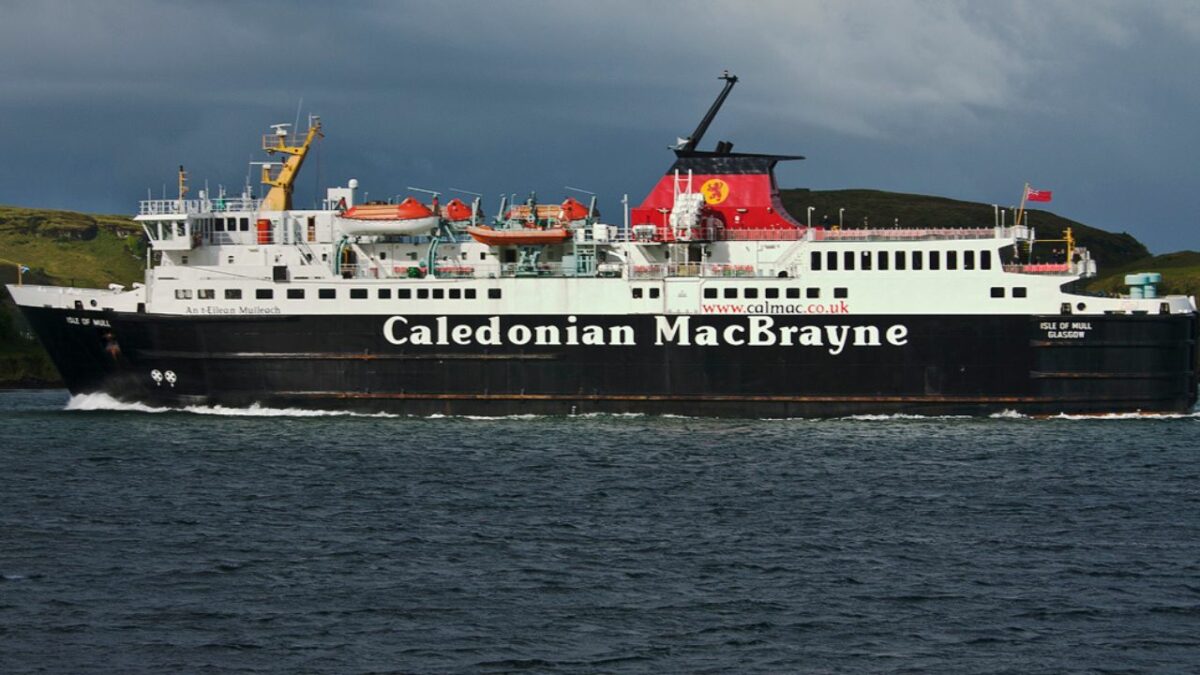
Ferries operated by Caledonian MacBrayne serve the island on three routes. The most popular one is Oban – Craignure. This is an excellent option for those coming to Mull without a car: campsites and bus connections are very close to Craignure’s ferry terminal.
On the other hand, the Lochaline – Fishnish route is ideal for folks looking to camp in the island’s central part. Finally, the Kilchoan – Tobermory route is the best option for those who want to explore Mull’s capital first.
See our guide to wild camping in Dumfries and Galloway Forest Park as well.
When is the Best Time to Camp on the Isle of Mull?
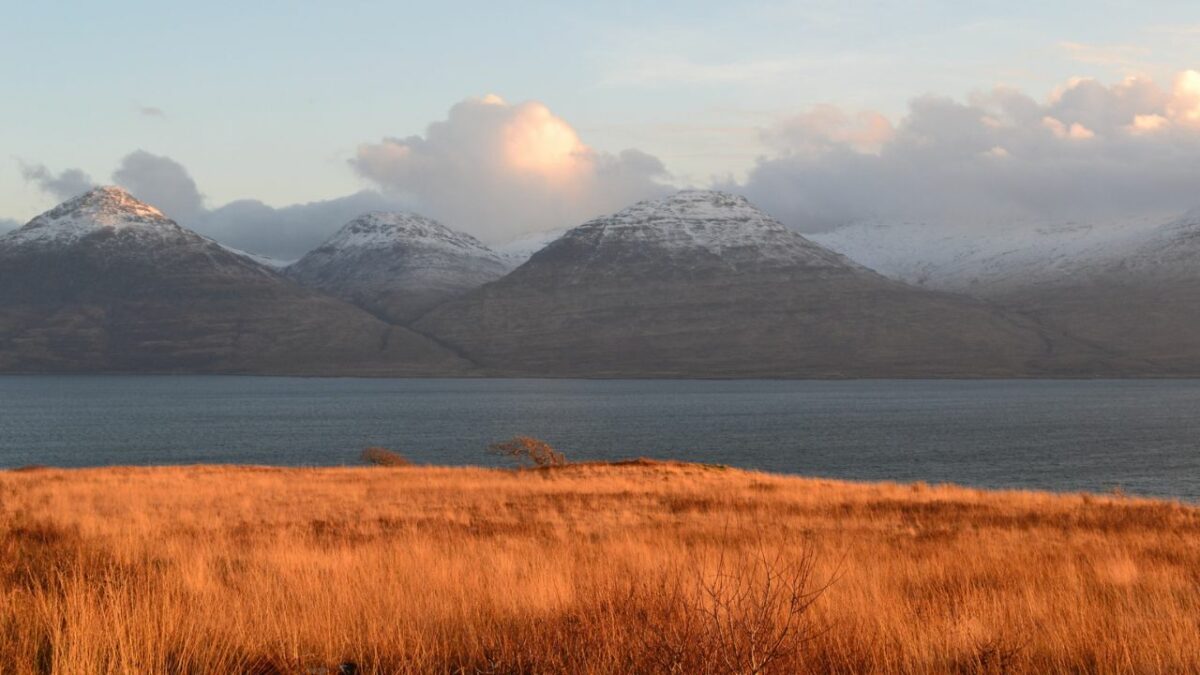
The best part of the year for camping on this island is between April and June. During this time, the weather is the most pleasant, the campsites are more relaxed, and there are fewer midges.
Is Wild Camping on the Isle of Mull Legal?
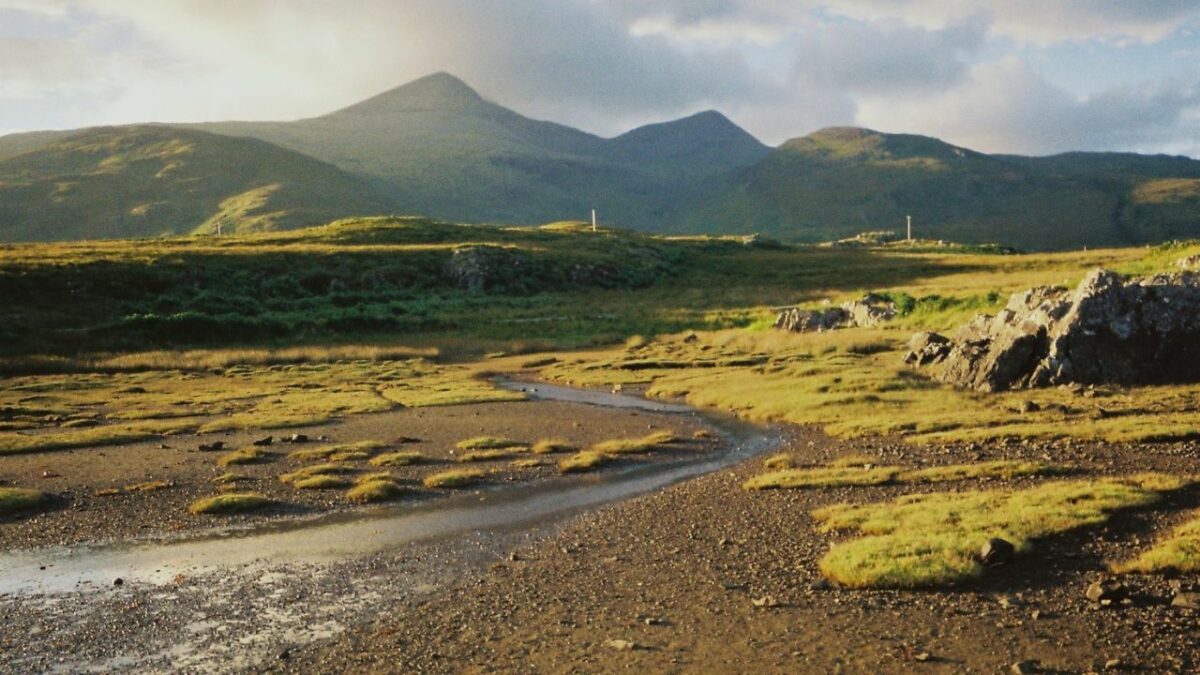
Thanks to Scotland’s Right to Roam Act, wild camping is completely legal on the Isle of Mull.
However, authorities ask campers to respect standard wild camping guidelines when staying on the island. These include respecting the Leave No Trace principles, camping away from roads and enclosed fields, not disturbing wildlife, not making open fires, and not staying in one place for more than three nights.
Where to Next?
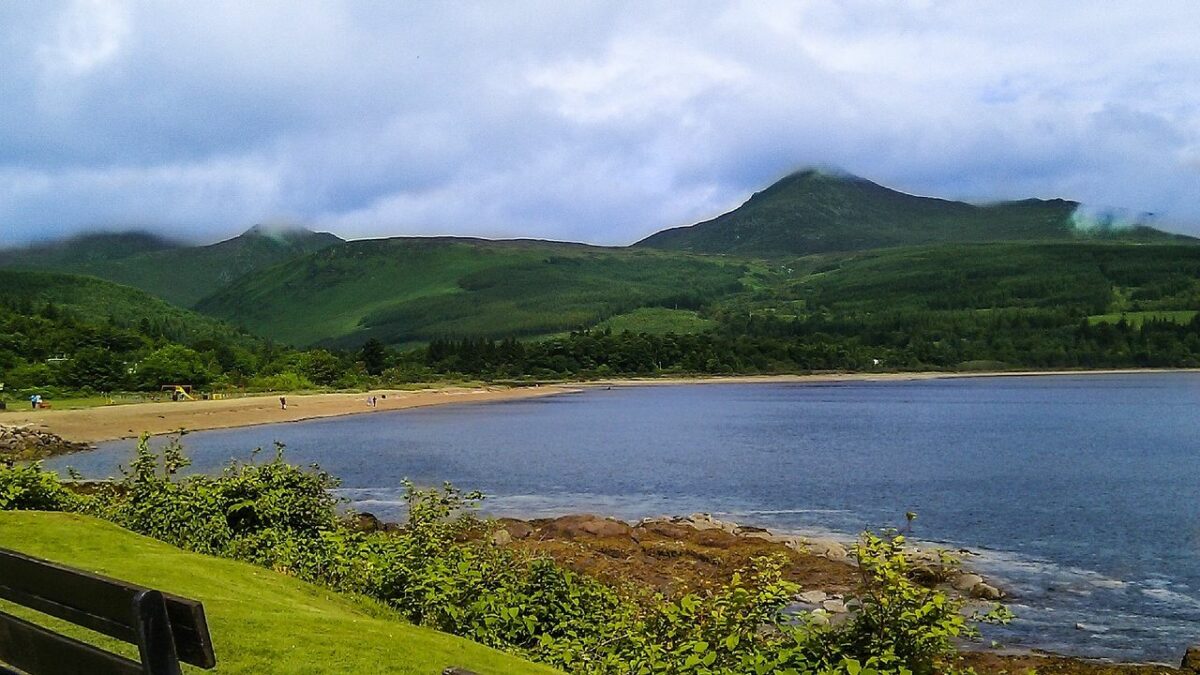
The Isle of Mull is just one of Scotland’s countless breathtaking islands abundant with top-rated camping spots.
Another such island is the Isle of Arran, full of dramatic mountain peaks, sheltered beaches, and verdant forests. Check out my guide to wild campsites on the Isle of Arran to learn more about its most secluded – and the most beautiful – tent-pitching spots. Or have a two-centre camping holiday and camp near Oban on the mainland.

I love hiking, backpacking, and camping. From the Camino de Santiago to the West Highland Way in Scotland or simply a great day hike on the weekend. Hiking refreshes me, my mind, and keeps my body reasonably fit. So far I have walked three Camino routes and many other long distance hikes in the UK, Canada, and around the rest of Europe. One of the best was my hike up Ben Nevis.

